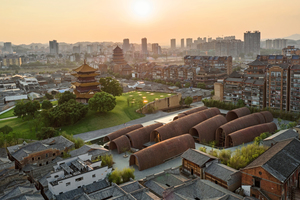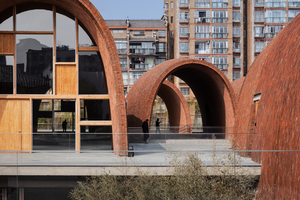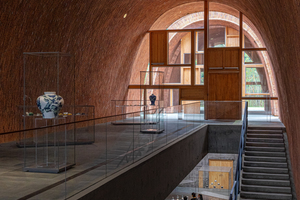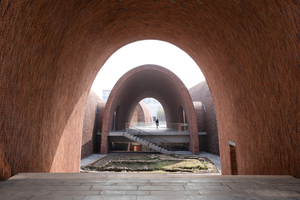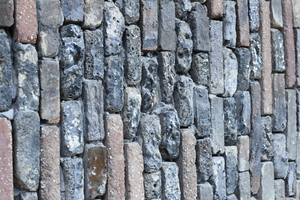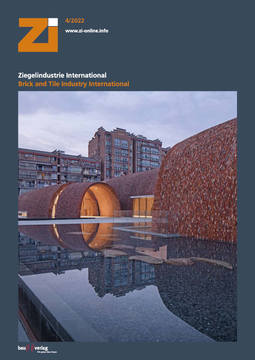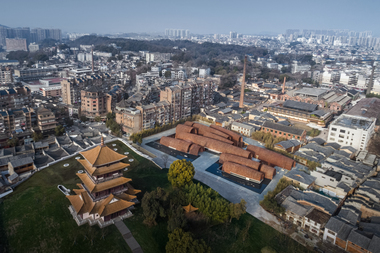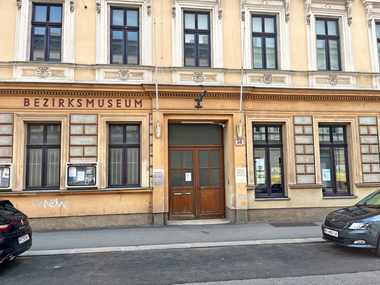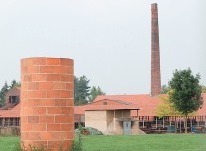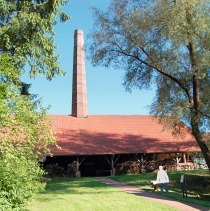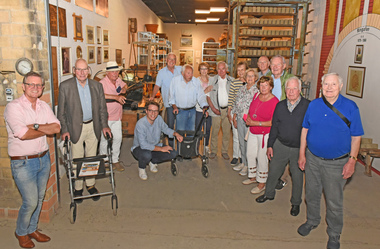Museum landscape made of brick vaults
An area in the middle of Jingdezhen, Jiangxi, with staggered, bulbous brick tubes, alternating levels, courtyards, water basins and stairs in between. The Jingdezhen Imperial Kiln Museum, completed in 2020, refers in its location, design and materials to the city’s more than 1700-year-old porcelain and kiln culture. The multiple award-winning ensemble won the Grand Prize at the Brick Awards 2022 and the prize in the category “Sharing Public Spaces”.
Brick vaults and kiln ruins
The museum building, designed by Studio Zhu Pei, Architectural Design & Research Institute of Tsinghua University, is located right next to the ruins of the imperial kilns in the centre of the old city. The basic element of the building ensemble, an elongated brick vault, is modelled on the organic form of traditional ceramic kilns. Each structure has a different size, length and curvature. All the vaults and courtyards are interconnected at ground and basement level.
Play with light, shadow and wind
Open and closed vault sections and slits in the outer walls alternate, creating a rhythm of light and shadow. The skylights are inspired by stove smoke holes. The five sunken courtyards lead daylight into the subterranean levels. At the same time, they create chimney effects, comparable to the vertical courtyards of the city’s traditional townhouses, and provide natural ventilation. This effect is supported by the fact that the museum buildings, open on both sides, are oriented according to the main wind direction.
Contemporary archaeology
The cigar-like vaults are made of two layers of masonry bricks, with a concrete infill for earthquake resistance. A total of 2.8 million bricks were used. The brick material follows the concept of reviving the past and consists of a mixture of new bricks and reused, second-hand bricks from demolished brick kilns. This is characteristic of Jingdezhen. To maintain a certain thermal performance level, the kilns there are demolished and rebuilt every two to three years.

